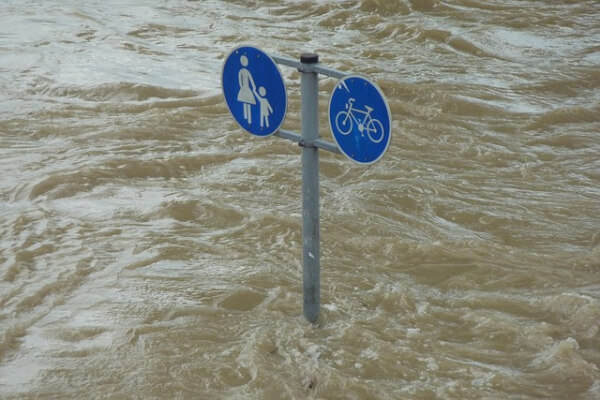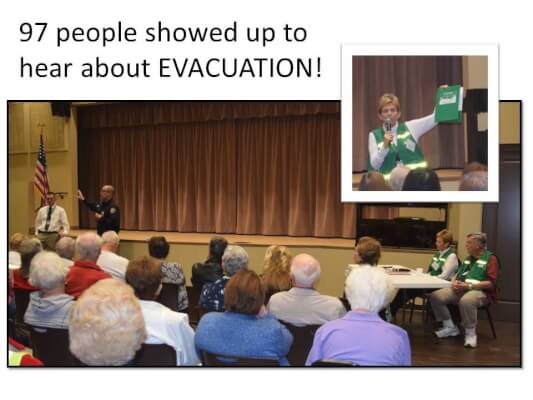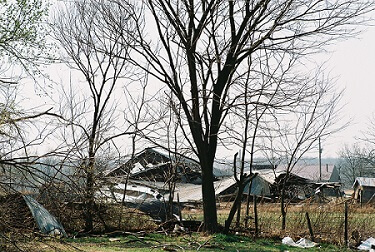More hurricanes, and Harvey isn’t even over yet

New hurricane season started June 1.
Recent headlines announce the start of a new hurricane season, with between 10 and 16 named hurricanes to look forward to. There’s apparently a new threat, too – “superstorms” that fall outside the regular categories!
So, have you moved recently? Or are you planning some travel?
Or maybe right now you are sitting in an area that could be threatened by the winds, storm surge or flooding from a hurricane? (Hurricanes don’t just hit coastal areas. They can create flooding for hundreds of miles inland.)
At Emergency Plan Guide we’ve written about hurricanes before, of course. (Remember the “Hurricane Headscratcher” that we put out last year?) But even if you think you’re an “expert,” it can’t hurt to refresh your understanding of some smart things to do to prepare.
Here are two excellent references, new to this Advisory:
- For families: . https://www.ready.gov/hurricanes Note particularly the comments about signing up for local alerts and getting familiar with local evacuation zones and routes.
- For business: http://www.agilityrecovery.com/assets/hurprep.pdf This 4-page checklist was written in 2013 so the statistics may not be up to date, but the recommendations are worth considering, particularly those that have to do with shutting your business down before the storm hits.
And to get back to Harvey, where there are still lessons to be learned . . .
Hurricane season reminds me of Harvey, so I went back to see what has happened in Texas since the storm hit there last year. (August-September, 2017)
The following list is about Texas, but it could apply to most every community affected or threatened by a natural disaster. (In fact, there are some striking similarities between what people in Houston experienced and what is going on right now in Hawaii.)
As you read, think about the threats your community could face and how it might fare . .
1- Insurance. Most homes in Harvey’s path didn’t have flood insurance. Since the storm, applications for flood insurance have increased, as you might expect. What you might not have expected is that the vast majority of new policies (quoted as 70% by one agent) are for homes outside the mapped flood hazard area. People are recognizing that planning around the concept of the “100 year flood” isn’t adequate.
2- Name. Harvey was so destructive (51 inches of rain in certain parts of Texas) that its name has been retired from the list of potential names for future storms.
3- Help from the Government. Texas has requested and received millions in aid for rebuilding. At the same time, the state requested “flexibility” in deciding how the funds should be used. This has alarmed advocates for housing and for disadvantaged communities because the list of projects submitted along with the requests was heavily weighted toward large-scale infrastructure.
4- Homeless. The problems haven’t ended for people displaced by the storm. Of course, some homeowners have started rebuilding. But other people whose homes were damaged have been notified they need to elevate the homes before they can move back in. Naturally, many can’t afford what can be considered major renovation. And the FEMA vouchers that were allowing homeowners to stay in hotels have now run out.
5- More homeless. People who were renting when the flood hit have suffered even more. If they had no insurance, they may have lost most of their personal property. Those who hadn’t found new apartments and had been staying in hotels found their vouchers ended even sooner than homeowners.
6- Still more homeless. I don’t even want to mention the FEMA trailers sitting empty months after the storm . . .
More results you may never have even considered.
7- Jails. Flooded courthouses slowed the wheels of justice, causing jails to become overcrowded. According to one jail insider, “The situation is so dire that the county lock-up may soon have to begin turning away arrestees.” (I was unable to find out if that actually happened.)
8- Animals. The water that inundated the area also caused displacement of animals. Alligators from the wild and also from parks floated free and appeared in flooded neighborhoods. Fire ants, driven from their underground homes, clustered into “floating islands” to protect their queens until waters receded and they were able to build new nests in new locations.
9- Disease. Medical professionals continue to monitor the impacts of the air pollution, contaminated water and mold caused by the flooding, mostly from the superfund sites in the region. Researchers predict long-term health and emotional health problems.
Yes, 2017’s hurricane season was “the most costly and disruptive on record” in the U.S. So maybe this year won’t be so bad?!
You can hope.
In the meanwhile, this one storm alone reminds us how Americans have become so dependent on modern conveniences – power, hospitals and medical services, transportation, communications – that when these get interrupted or destroyed, the results can be disastrous.
Time to take another look at how well YOU are prepared for an emergency.
Virginia
Your Emergency Plan Guide team
P.S. Many of our Advisories are meant to be shared. This is one. In particular, share the links to the two sets of checklists for families and for business. Just one good idea could save both money and anguish — not to mention lives.

 After the wildfires last fall, we kept hearing these two questions from a number of our California neighbors.
After the wildfires last fall, we kept hearing these two questions from a number of our California neighbors.
 When you see the piles of ruined possessions out on the curb, as in the photo, you get a better idea of what “no insurance” really means. And, I hope, you are prompted to take another look at whether your own insurance will help cover flood damage.
When you see the piles of ruined possessions out on the curb, as in the photo, you get a better idea of what “no insurance” really means. And, I hope, you are prompted to take another look at whether your own insurance will help cover flood damage.

